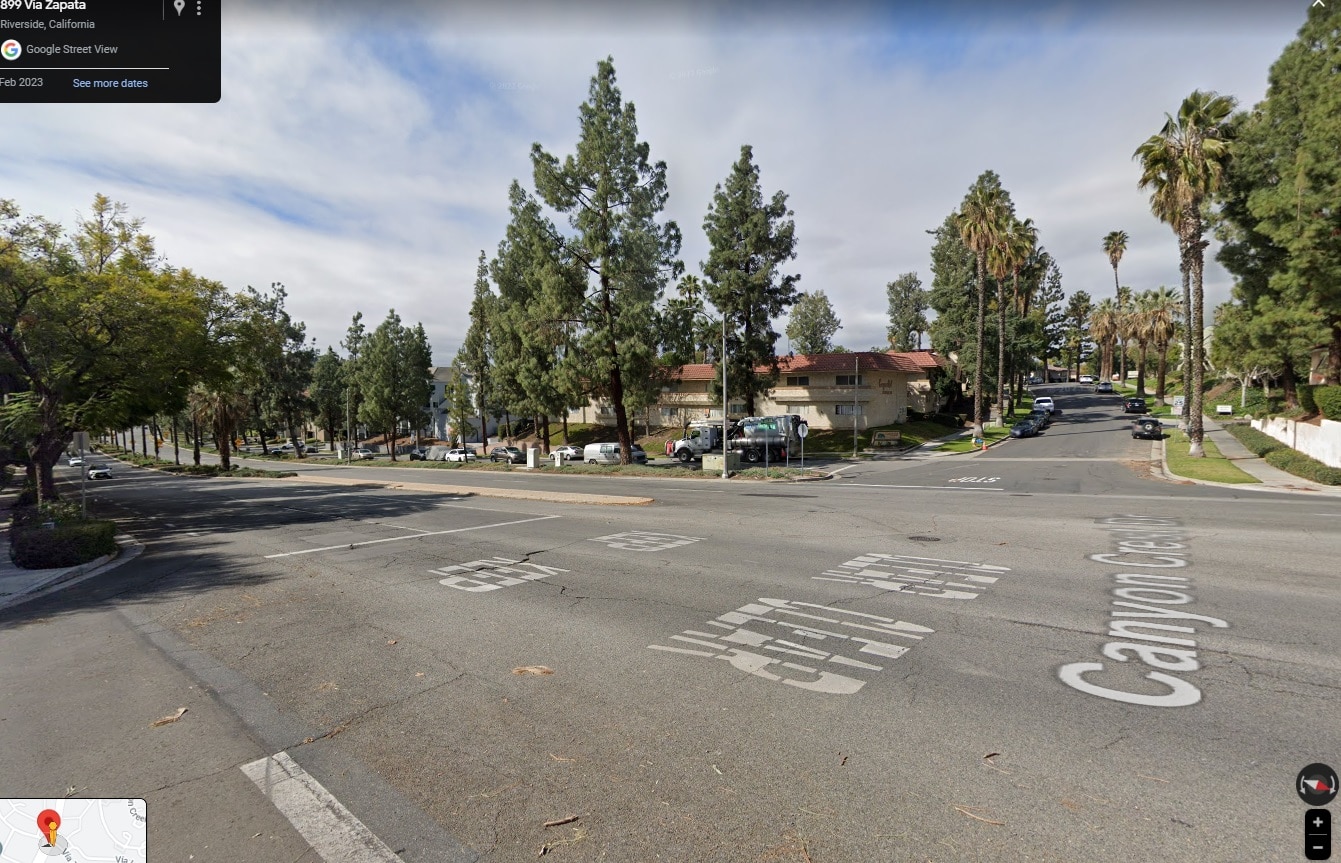Torts attorney Greg Rizio made his case before the California Supreme Court on May 22.
Rizio argued that his client, a Riverside mother whose daughter was injured in a car crash on Via Zapata Drive and Canyon Crest Drive, should not have to prove she knew exactly about Riverside’s alleged negligence in designing the intersection at the time of the accident.
“I would submit to the court that dangerous conditions take place over time. They don’t just happen right away. Therefore, it is impossible, and an impossible burden, to say that a plaintiff should understand all of the elements at the time that a triggering event takes place,” Rizio said.
The court is set to write new precedent on a plaintiff’s ability to bring negligent infliction of emotional distress (NIED) claims.
Jayde Downey and her daughter, Malyah Vance, are suing the city and property owners on claims that they negligently blocked the lines of sight for the Via Zapata/Canyon Crest Drive intersection.
Vance was on the phone with Downey while driving her 2006 Kia Spectra eastward on Via Zapata Dec. 4, 2018.
Vance’s navigation system told her she had arrived at her destination, but she told Downey that she was driving around an apartment complex, and that she was at an address near to the Via Zapata and Canyon Crest intersection. Both Vance and Downey knew the intersection was dangerous after driving by it multiple times, according to their complaint. Downey told Vance to take a left onto Canyon Crest from Via Zapata, across both lanes of traffic. Vance said she was going to go left, and counted off passing cars until she knew it was safe to turn.
Downey then heard Vance take a sharp breath and say a shocked “Oh,” followed by the sound of shattering glass and skidding tires. Downey, knowing her daughter was in an accident, left work to drive to the scene.
Downey kept speaking into the phone, trying to get a response, until she heard a stranger’s voice say, “Would you stop? I’m trying to find a pulse.”
Vance survived the crash, but suffered a traumatic brain injury that has affected her relationship with her mother, according to Rizio.
The plaintiffs argue that the city was negligent in the design and maintenance of the intersection, to the point that even they knew it was dangerous. Canyon Crest Drive comes at a curve, making incoming cars hard to spot. The city allowed cars to park on the side of Canyon Crest Drive, blocking the view. The city previously did not allow cars to park on the intersection.
“A previous city of Riverside engineer, 20 years before, goes to that intersection, sits there and looks, and says, ‘If we allow cars to park there, there is a dangerous line of sight condition.’ They knew it,” Rizio said in oral argument. By phone, Rizio said that he found that out in discovery in Vance’s independent case, which was not thrown out.
They also sued the property owners of the apartment complex on the intersection corner, arguing that their landscaping obstructed the view of traffic.
Case history
Riverside Superior Judge Harold Hopp threw out Downey’s case Sept. 24, 2021, after finding that Downey did not have a bystander claim to sue. A bystander claim occurs when a person witnesses their family member being harmed.
The Fourth District court of Appeal, Division Two, found on April 26, 2023, that Downey did experience the crash, although remotely, because of her knowledge of the intersection and what she heard over the phone. Her case was the first in which a person managed to bring an audio-based bystander NIED claim.
The court still ordered the case to be amended, finding that she did not prove she knew about the city or the property owner’s alleged negligent conduct at the time of the crash. The ruling cited the 2002 case Bird v. Saenz.
“Under Bird, liability for negligent infliction of emotional distress cannot be imposed for the consequences of (Riverside) and (the property owners’) assertedly harmful conduct. Bird held that it is not enough for a plaintiff to observe “ ‘the results of the defendant’s infliction of harm,’ however ‘direct and contemporaneous’ ” as “(s)uch a rule would eviscerate the requirement . . . that the plaintiff must be contemporaneously aware of the connection between the injury-producing event and the victim’s injuries,” the court said.
The majority opinion directed Downey to amend her complaint to prove she knew about the dangerous acts at the time of the crash.
Appellate Justice William Dato agreed that Downey did experience the crash virtually, but dissented in the majority’s finding that Downey needed to amend her complaint.
“Nothing requires that (Downey) be aware of each and every separate act of negligence that may have contributed to the accident,” Dato wrote.
“How can someone listening on a phone know what (a participant in a car crash) did or did not do? And what if (the driver) were to claim that a passenger in the car, with whom he was arguing, grabbed the steering wheel, causing the vehicle to veer off course? Is Downey precluded from stating a claim against the passenger because she couldn’t possibly know about the passenger’s involvement? Or if (the driver) says he couldn’t stop because of faulty brakes repaired by a negligent mechanic? Is the mechanic insulated from a claim by Downey?” Dato continued.
Oral argument
Rizio argued that affirming the Downey decision could protect many would-be defendants from lawsuits by ending cases before discovery.
Deputy City Attorney Edward Reed spoke for the city. He argued that Downey did not have the knowledge to evaluate the danger of the intersection. He cited precedent from a medical malpractice ruling in which family members were found inadequate to evaluate their mother’s medical treatment for an NIED case.
He argued that knowledge of the negligent act at the time of the injury was in line with the court’s past ruling in the 1989 case Thing v. La Chusa.
In the city’s answer brief, they said that public policy supports limiting negligent infliction of emotional distress cases to engineering designs.
“Jayde Downey knew her daughter was lost, distracted and talking on her cell phone at the time of the accident, but she did not know that her daughter caused the accident by running the stop sign without even looking for oncoming traffic. In this case, auditory perception limited her sensory awareness of causal events and thus necessarily limited NIED recourse,” their brief said.
Shelby Kennick of CP Law Group argued for the property owners. She argued that Downey had no idea of the owners’ conduct at the time of the accident.
“She could not see the tree branches, she could not hear the tree branches, she could not see where the stop sign was placed, if there were parked cars, she had no awareness of the defendant’s connection, in relation to plaintiff’s injury. The sound of a car crash does not equate to, ‘oh, it’s because the trees were negligently maintained.’ Even if plaintiff Downey knew at other times that area, she had driven there before, and the trees had blocked her view—she had no idea at the time of the accident,” Kennick said.
Case information
Rizio is with Rizio Lipinsky Heiting.
Appellate Case No. S280322
Read Downey’s opening brief here
Read the city’s answer brief here
Watch oral argument here
Read our previous coverage:
Riverside crash case sets rules for emotional distress claims








